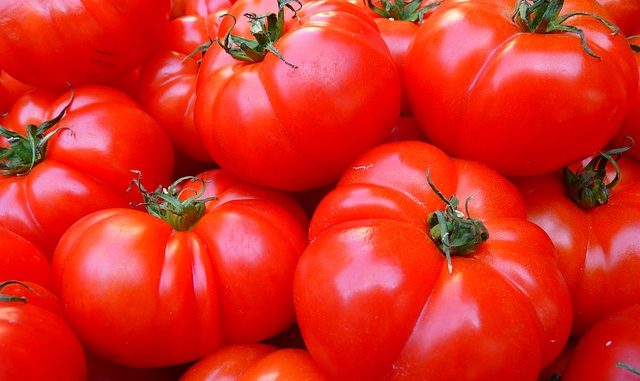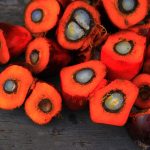
Lycopene is the bright red pigment obtained from fruits and vegetables such as tomatoes, red carrots, sweet red peppers, watermelons, and papaya. It is responsible for the red colour of many of these fruits. The tomato is the richest natural source where it occurs in a range between 2.5 to 200 mg/100g of raw tomato (Seybold et al., 2004). The pigment is found to a much smaller extent in watermelons and red grapefruit. It is a plant antioxidant and is widely consumed throughout the world.
There is a general perception that eating plenty of tomatoes and products such as processed tomato which is rich in lycopene will help reduce the risk of developing cardiovascular disease, diabetes, osteoporosis as well as cancers such as colon, breast, lung and prostate.
A number of health benefits are linked to the consumption of lycopene which range from cardiovascular (heart) health benefits through to protection against skin disorders including sunburn and reducing the risk of developing certain cancers (Clinton, 1998). The cancers worth noting are prostate, breasts and some gastrointestinal types. It is worth noting though at the outset that plenty of clinical research is required to confirm many of the supposed benefits. However a number of epidemiological studies have shown some promising results.
Structure And Chemistry Of Lycopene
It is a member of the carotene family but is not a vitamin as some think. It is in fact an intermediate in the biosynthesis of many carotenoids which include beta-carotene.
The structure is a symmetrical, acyclic carotenoid with 13 double bonds of which 11 are conjugated. Each double bond in the polyene chain can exist in one of two configurations which means 1056 possible isomers can exist (Zechmeister, 1962).
Lycopene As A Colouring Ingredient
In food applications it is used to produce shades from yellow to red and is often used as a natural substitute for synthetic dyes such as Allura Red And Ponceau Red. It is relatively expensive to use as a natural carotenoid colour but the benefits of being able to make all natural claims on ingredient lists is quite powerful.
Lycopene began to be used as a colouring agent when tomato cultivars with a high content were introduced along with better extraction processes. The food colour was approved in Europe in 1997 and in the USA in 2005.
The colour is fat soluble and must be emulsified for use in water systems. When dissolved in fats or emulsified it tends to produce at best an orange colour. To generate the red hue requires fine dispersions of crystals.
The colour is relatively stable in high temperature processing when it is part of the tomato (Mayeaux et al., 2006). Degradation only occurs with prolonged heating. Heating and the presence of fat as in snacks for example melts the crystals and they create a more orange hue. The rate of any colour change depends on fat content, the saturation levels of the fat and the temperature of processing. Any fat content in a food above 8 per cent means the red hue is difficult to achieve. Less lycopene is required than beta-carotene to produce a comparable colour hue because dispersed lycopene has a colour intensity about 6 to 8 times greater than beta-carotene.
Lycopene is sensitive to oxidation but the addition of vitamin C (ascorbic acid) can improve resistance. Lycopene produces a cloud in some beverage applications because of its poor solubility.
Antioxidant Activity Of Lycopene
Lycopene has a very high propensity for quenching singlet oxygen. It has a similar if not slightly better ability at mopping up free radical species like singlet oxygen than other nutritional carotenoids such as beta-carotene and tocopherol (Di Mascio et al., 1989).
Reduction In the Risk Of Developing Certain Cancers
Lycopene has a very high antioxidant capacity which has been associated with slowing down if not preventing the the development of particular types of cancer. However many of these studies have been in vitro, meaning they have been studied in the laboratory with particular cancer cell lines. None the less there is a great deal of excitement concerning the findings of these studies.
In the test tube, lycopene appears to reduce the growth of prostate and breast cancer cell lines by limiting the growth of tumours.
References
Clinton, S.K. (1998) Lycopene: chemistry, biology, and implications for human health and disease. Nutrition Reviews, 56(2), pp. 35-51 (Article)
Di Mascio, P., Kaiser, S., & Sies, H. (1989). Lycopene as the most efficient biological carotenoid singlet oxygen quencher. Archives of Biochemistry and Biophysics, 274(2), pp. 532-538. (Article)
, , , . (2006) Effects of cooking conditions on the lycopene content in tomatoes. J. Food Sci. 71 C461–4. (Article)
, , , , . (2004) Changes in contents of carotenoids and vitamin E during tomato processing. J. Agri. Food Chem. 52 pp. 7005–10 (Article)
. (1962) Cis‐trans isomeric carotenoids, vitamins A, and arylpolyenes. Wien : Springer‐Verlag. 226 p.


Leave a Reply